Become more familiar with each of your car’s systems and parts so you can make informed decisions about needed maintenance and repairs.
The descriptions and depictions in this section can vary depending on car make, model and type.
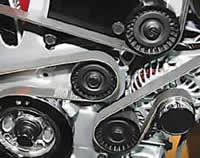
You car’s belts and hoses are essential to the cooling, air conditioning and charging systems, and the engine. Don’t ignore these routine replacement intervals because they can break down and leave you stranded.
The timing belt keeps the crankshaft and camshaft mechanically synchronized to maintain engine timing. Whether serpentine, V-belt or fan belt (the belts on the outside of the engine), they all transmit power from the front of the engine to accessories that need to be driven, such as the air conditioning, the charging system and fans. Radiator and heater hoses carry coolant to and from the engine, radiator and heater core.
Key items that affect the replacement interval for belts and hoses:
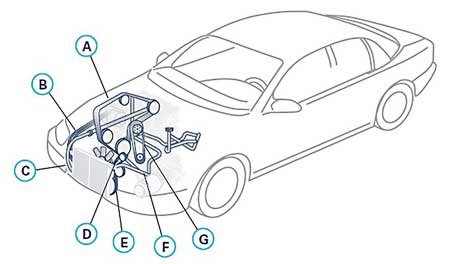 A. Serpentine belt
A. Serpentine belt
B. Heater hoses
C. Lower radiator hose
D. Driver belt (V-belt)
E. Fan belt
F. Upper radiator hose
G. Timing belt
Not all cars use timing belts. Also, some cars may use one serpentine belt for all accessories, others may use a combination of serpentine and V-belts, while others may use only V-belts.
.................................................................................................................................................................
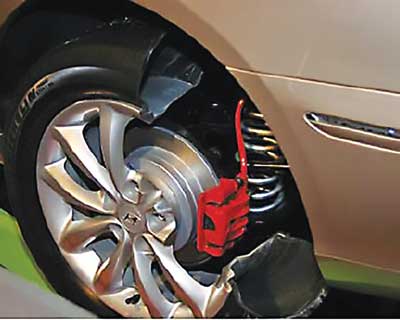 WHAT IS IT?
WHAT IS IT?Your car’s brake system is its most critical safety system and you should check it immediately if you suspect any problems. A properly operating brake system helps ensure safe vehicle control and operation under a wide variety of conditions.
When you push the brake pedal, the force generates hydraulic pressure in the master cylinder. This pressure flows through the hydraulic lines and hoses to the wheel cylinders and calipers, forcing the shoes against the drums (drum brakes) and the pads against the rotors (disc brakes). The resulting friction slows the vehicle and is relative to the amount of force applied at the brake pedal.
Brakes are a normal wear item for any car and eventually they’re going to need replacement. Avoid letting your brakes get to the“metalto-metal” point, which usually means expensive rotor or drum replacement. Factors that affect wear include driving habits and quality of brake pads and shoes.
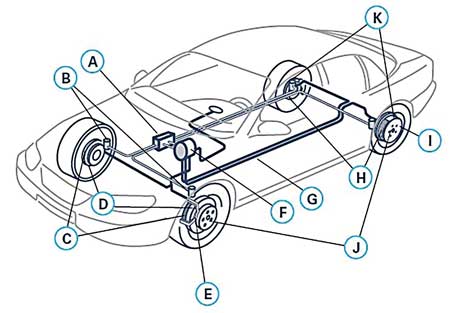 A. ABS modulator
A. ABS modulator
B. Wheel speed sensors
C. Pads
D. Rotors
E. Brake calipers (disc brakes)
F. Master cylinder
G. Hydraulic lines and hoses
H. Shoes
I. Wheel cylinders (drum brakes)
J. Bearings, seals or hub units
K. Drums (not shown-would cover H)
...................................................................................................................................................................
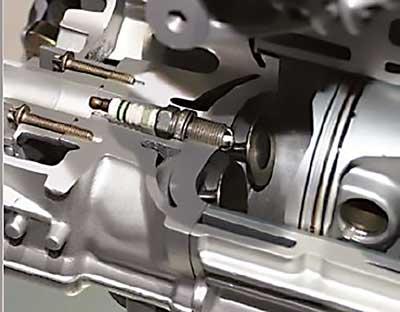
Your car’s emission system keeps the engine running cleanly and efficiently in all sorts of operating conditions. A steady or flashing warning light on your vehicle dashboard indicates a problem that is currently happening and may require immediate attention. Failure to do so can reduce your gas mileage or cause your vehicle to pollute.
Your car’s emission system controls the emissions, exhaust and pollutants (including gasoline vapors escaping from the fuel tank), using an array of sensors, computerized engine controls and the exhaust components. The emission system substantially reduces harmful gases such as carbon monoxide (CO), unburned hydrocarbons (HC) and oxides of nitrogen (NOx) and, by law, must be maintained in operating condition.
Some factors affecting the emission system include:
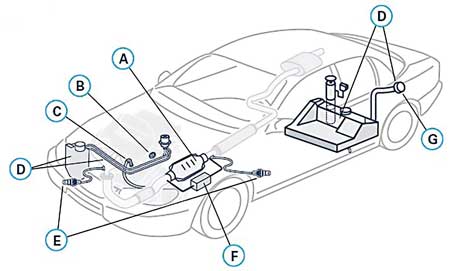 A. Catalytic converter and exhaust components
A. Catalytic converter and exhaust components
B. EGR valve and related components
C. PCV Valve
D. Evaporative system
E. Oxygen sensors
F. Control module
G. Gas cap
..................................................................................................................................................................
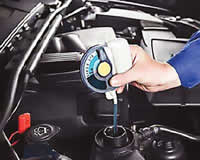
The engine cooling system affects your car’s overall dependability and engine longevity. Cooling systems have advanced over the years with new coolant formulations and new radiator designs and materials. If you suspect a problem with your cooling system, you should have it checked immediately.
The key parts of the cooling system remove heat from the engine and automatic transmission and dissipate heat to the air outside. The water pump circulates coolant through the engine. The coolant absorbs heat and returns it to the radiator where heat is dissipated. The thermostat regulates the coolant temperature to keep it consistent for efficient engine operation.
Factors that affect the replacement of cooling system parts include:
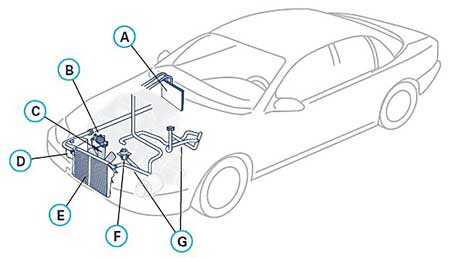
A. Heating core
B. Water pump
C. Cooling reservoir
D. Coolant reservoir
E. Radiator
F. Thermostst
G. Hoses
...................................................................................................................................................................

Exhaust systems have come a long way from the old days of exhaust pipes and mufflers. Today, the exhaust system is safety and emissions control rolled into one. Have your car’s exhaust system inspected regularly and check it immediately if you suspect any problems.
The exhaust system routes dangerous exhaust gas from the engine out and away from the car to keep from affecting the occupants. The exhaust system reduces exhaust noise from the engine. The catalytic converter reduces the level of harmful pollutants in the exhaust. The oxygen sensors mounted in the exhaust system monitor the level of oxygen in the exhaust gases to maintain efficient engine operation and to monitor the converter’s operation.
Maintain a safe car with regular exhaust system checks.Factors that affect replacement requirements include:
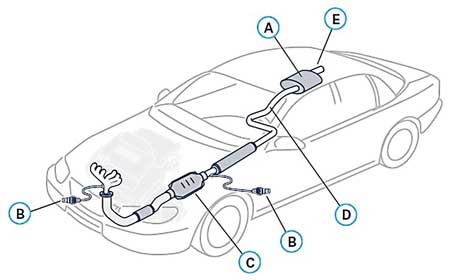
A. One or more mufflers
B. One or more oxygen (O2) sensors
C. One or more catalytic converters
D. Exhaust pipe
E. Tail Pipe
................................................................................................................................................................
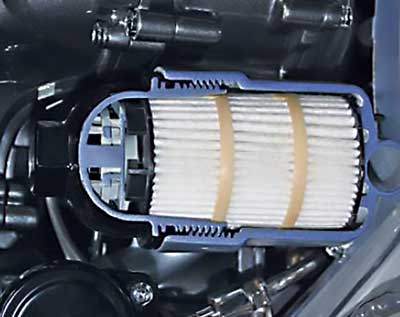
Your car’s filters are important to the longevity of your car and interior comfort and should be replaced regularly.
The oil filter traps contaminants, allowing the oil to flow through the engine unrestricted. The fuel filter separates harmful contaminants that may cause problems with carburetors or intricate fuel injectors. The air filter traps dirt particles, which can cause damage to engine cylinders, walls, pistons and piston rings. The airfilter also plays a role in keeping contaminants off the airflow sensor (in fuel-injected cars). The cabin filter helps trap pollen, bacteria and dust that may find their way into a car’s ventilation system.
Filters are normal wear items that require regular checks and replacement. Factors that affect replacement intervals include:
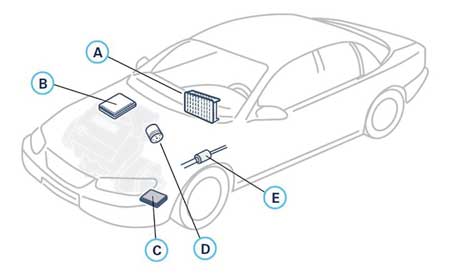
A. Cabin filter
B. Air filter
C. Automatic transmission filter
D. Oil filter
E. Fuel filter
